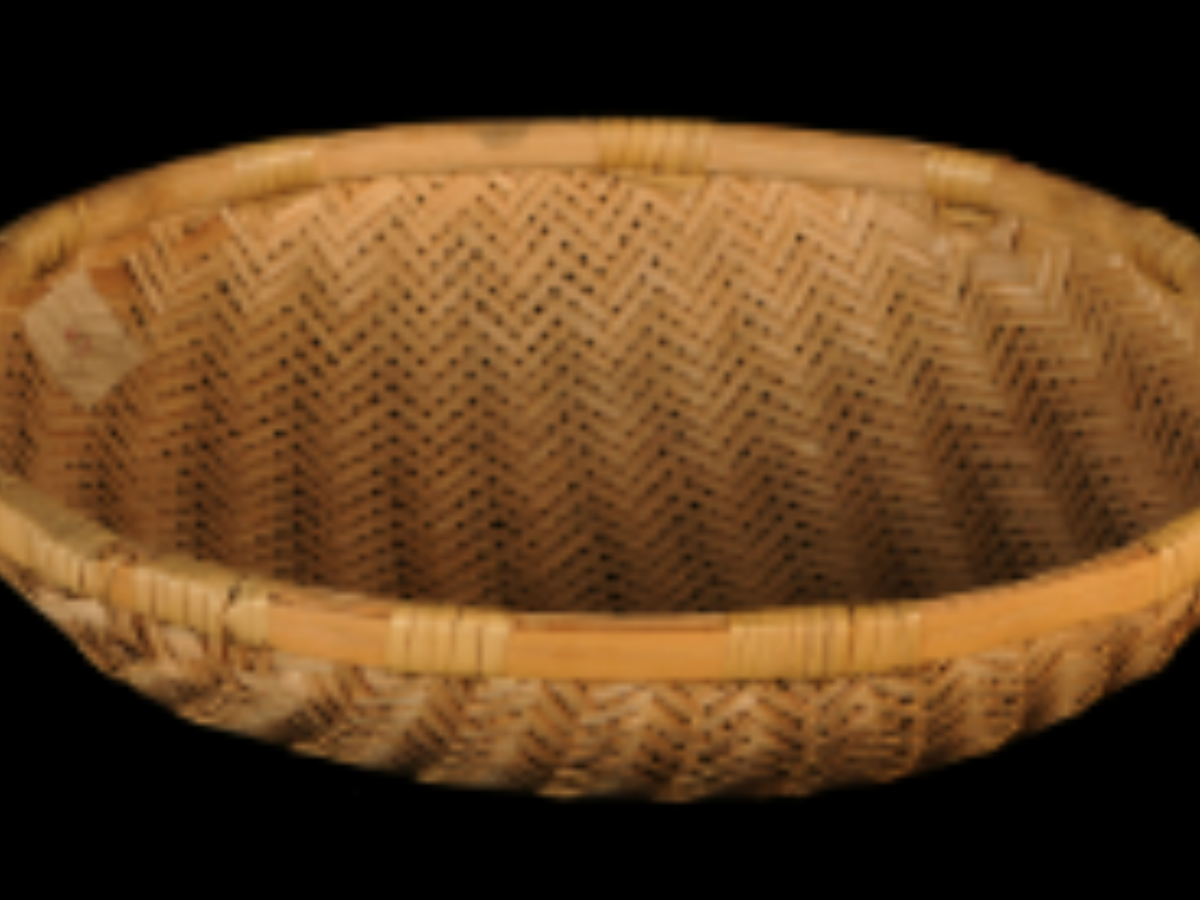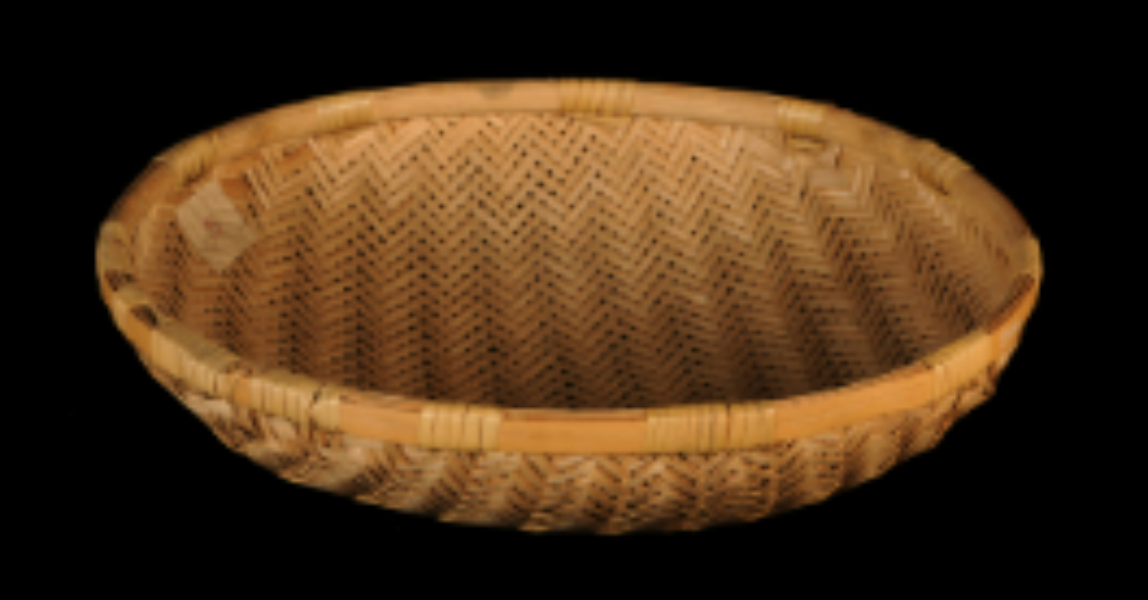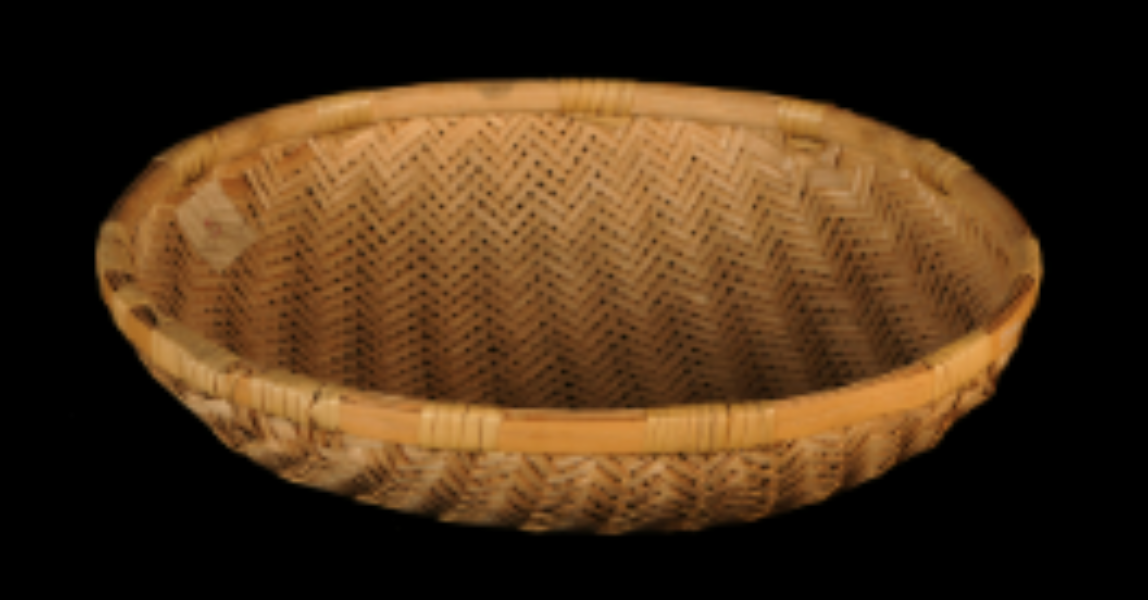State
Tribe Name
Art Type
short description
The Santhal tribe, an agriculturally based community of the eastern Indian states, is known for its close harmony with nature and craftsmanship, especially in bamboo. The Chala, an art of utility, is another fine example of the usage of such skills. The Chala is a traditional bamboo basket with perforations which is mostly used as a sieve for filtering.
Thumbnail

Filter Postion
Left
Filter Background
Off
Theme
Filter Header Image

content
Image

description
The Santhal tribe, an agriculturally based community of the eastern Indian states, is known for its close harmony with nature and craftsmanship, especially in bamboo. The Chala, an art of utility, is another fine example of the usage of such skills. The Chala is a traditional bamboo basket with perforations which is mostly used as a sieve for filtering.
Fine weaving has been carried out with flat bamboo strips forming the Chala. One noteworthy feature is the perforations designed at regular intervals with purpose into the weaving. These holes allow grains to fall through while retaining the chaff, thus giving the Chala a very important role in grain-processing traditions.
The basket has a circular base and a widely open circular mouth, thus aiding its utility as a sieve. Two split bamboo strips along its rim give strength and stability to its structure. These strips are secured together by means of bamboo skin straps at thirteen places, a feature that requires skilful craftsmanship and reflects the Santhal artisan's concern for durability.
This domestic and agricultural use of the Chala is emblematic of the intimate awareness of the tribe regarding their materials and their needs. Functionally, this basket is also designed with environmental considerations, fashioned from biodegradable materials completely sourced from the local forest ecosystem.
The Chala serves more than its purpose as a household item; it stands as a testimony to the Santhal people's existence in harmony with nature and their culture of craft traditions in producing utility items.
Fine weaving has been carried out with flat bamboo strips forming the Chala. One noteworthy feature is the perforations designed at regular intervals with purpose into the weaving. These holes allow grains to fall through while retaining the chaff, thus giving the Chala a very important role in grain-processing traditions.
The basket has a circular base and a widely open circular mouth, thus aiding its utility as a sieve. Two split bamboo strips along its rim give strength and stability to its structure. These strips are secured together by means of bamboo skin straps at thirteen places, a feature that requires skilful craftsmanship and reflects the Santhal artisan's concern for durability.
This domestic and agricultural use of the Chala is emblematic of the intimate awareness of the tribe regarding their materials and their needs. Functionally, this basket is also designed with environmental considerations, fashioned from biodegradable materials completely sourced from the local forest ecosystem.
The Chala serves more than its purpose as a household item; it stands as a testimony to the Santhal people's existence in harmony with nature and their culture of craft traditions in producing utility items.
Image Mode
landscape
promoted
On
Verified
Off
